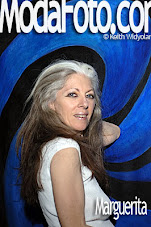 from a catalog Works on Paper -1999 solo exhibit Marguerita
from a catalog Works on Paper -1999 solo exhibit MargueritaThousands of works of art stolen by the Nazis are still not back in the hands of their rightful owners. A new exhibition in Jersualem is trying to fix that -- visitors can file a claim for the works on display if they recognize their property.
An exhibition with a difference has opened in Israel. Visitors will have the option of taking the paintings home with them -- provided they can prove they are the works' rightful owners.
The exhibition "Looking for Owners: Custody, Research and Restitution of Art Stolen in France during World War II," which runs through June 3 at the Israel Museum in Jerusalem, shows 53 paintings which were looted from their rightful owners by the Nazis. The works, which include paintings by major European artists such as Claude Monet, Paul Cezanne and Edgar Degas, come from France's collection of unrestituted works of art, known as the Musées Nationaux Récupération (MNR).
The Nazis took around 100,000 art works from France during World War II, either by looting or commercial transactions. The Allies then repatriated some 60,000 works to France after the war, with the intention that they be returned to their proper owners. Around 2,000 unrestituted works were given to France's national museums in the early 1950s and are now stored or exhibited in museums around France, including in Paris' Louvre and the Musée d'Orsay.
The MNR collection came to the attention of the general public in 1995 when author Hector Feliciano published his book "The Lost Museum," which looks at the Nazis' schemes to steal art. Since then, claims have been made for various MNR works and several have been returned to their true owners.
The new exhibition, which is co-organized by France's Ministry of Foreign Affairs and Ministry of Culture and Communication, aims to help that process along. "What we expect from this exhibit is that a miracle will occur and someone will come here and say 'that belongs to me,'" French Culture Minister Christine Albanel said Monday night, in remarks quoted by the Jerusalem Post.
P.S. I wonder if the family of Richard Kallert,the IIIReich Transportation Chief,who invaded my mother's home and building in Krakow,then sending her mother in law from the 4th floor to her Death, and my mother to Auschwitz?
Would they return what belonged to her, like the Cellini sculpture,Polish art,jewelry and other assets?
Nazi dictator Adolf Hitler organized a systematic looting of Europe's art treasures with the help of art experts who compiled a secret "wish list" of works to be stolen. His aim was to transform his hometown of Linz in Austria into the art capital of the Third Reich. According to experts, between 250,000 and 600,000 looted artworks remain unclaimed and are still held by museums, governments, and private collectors around the world.
http://www.spiegel.de/international/world/0,1518,536344,00.html















